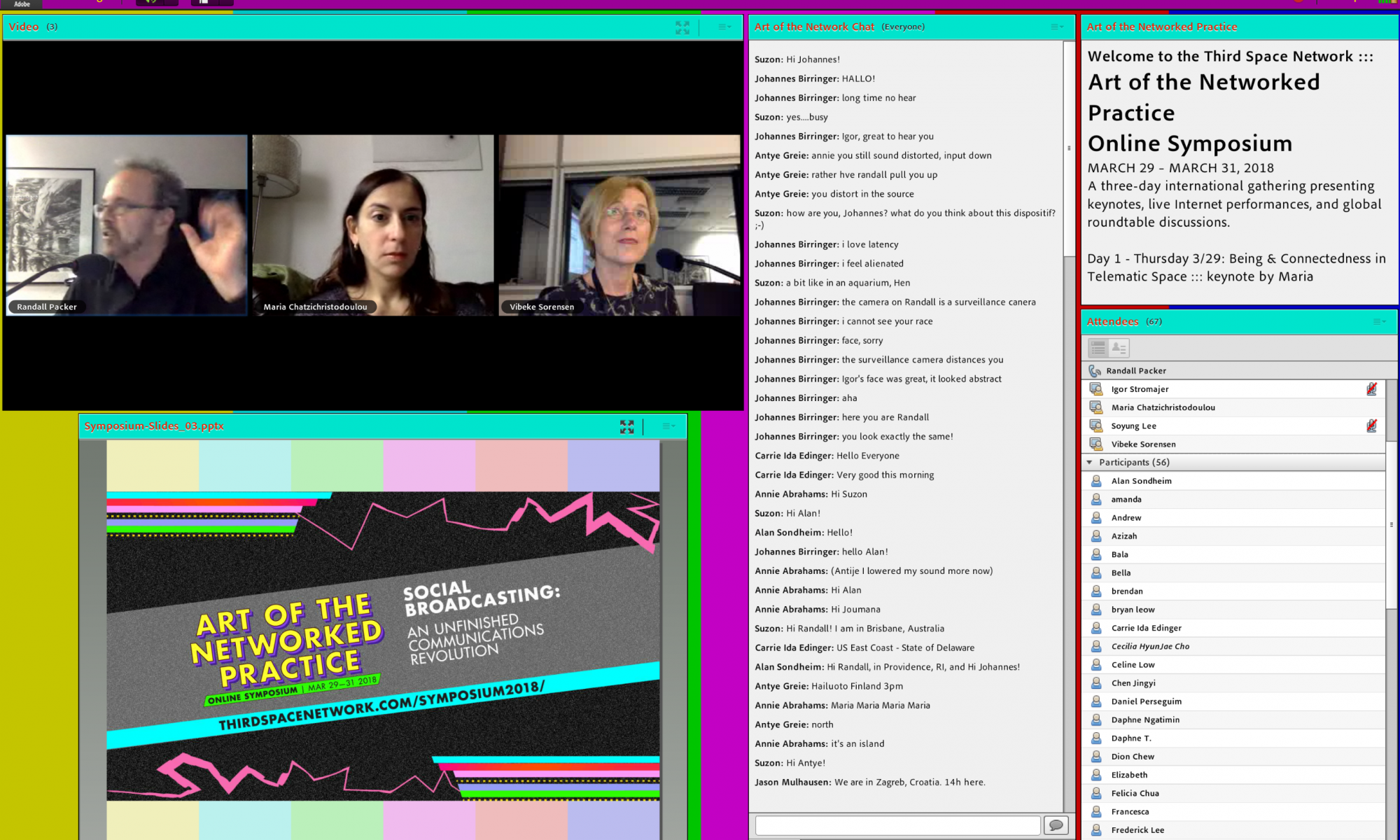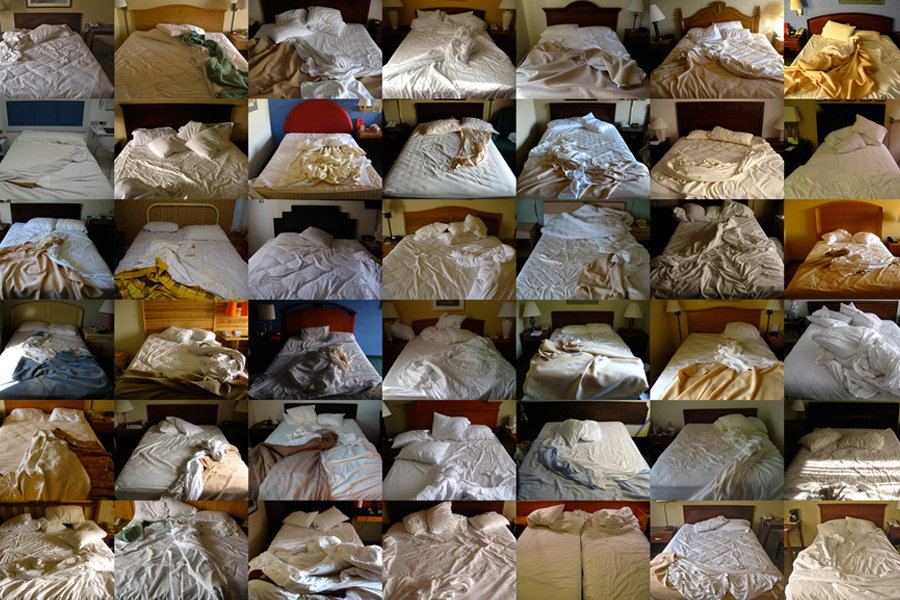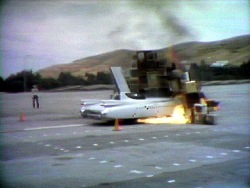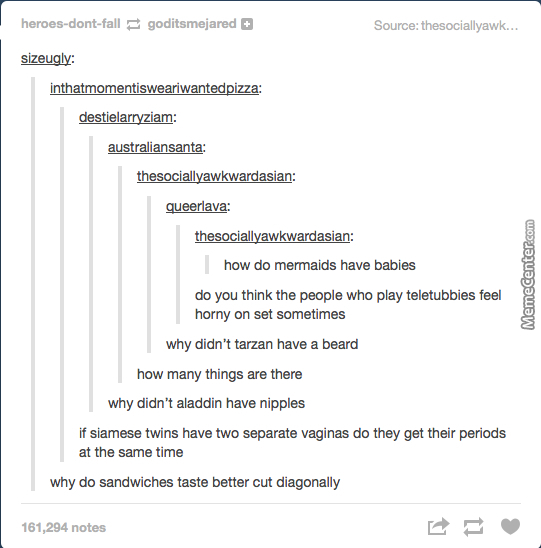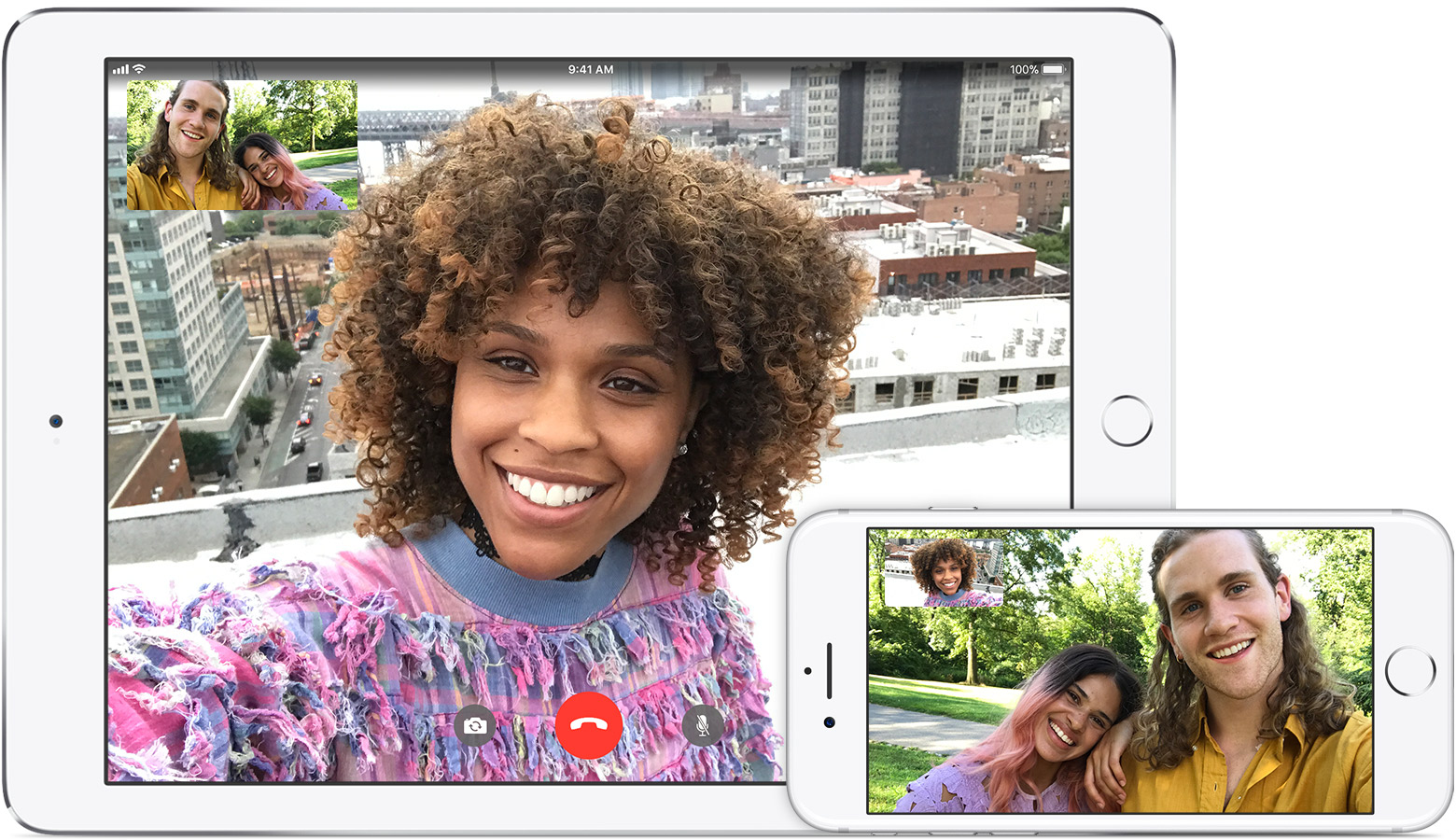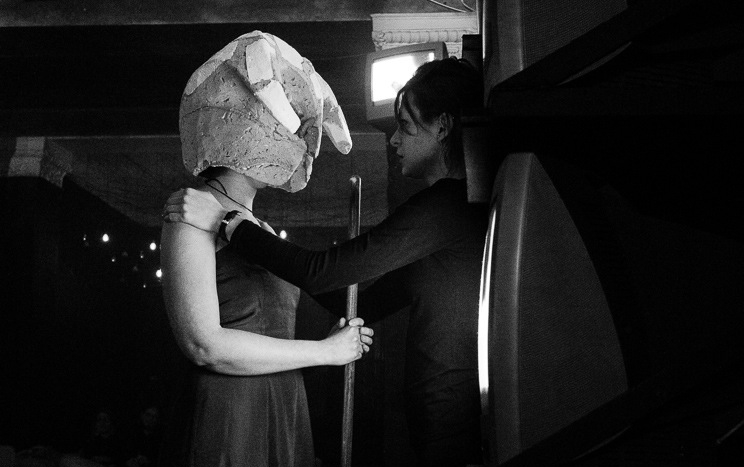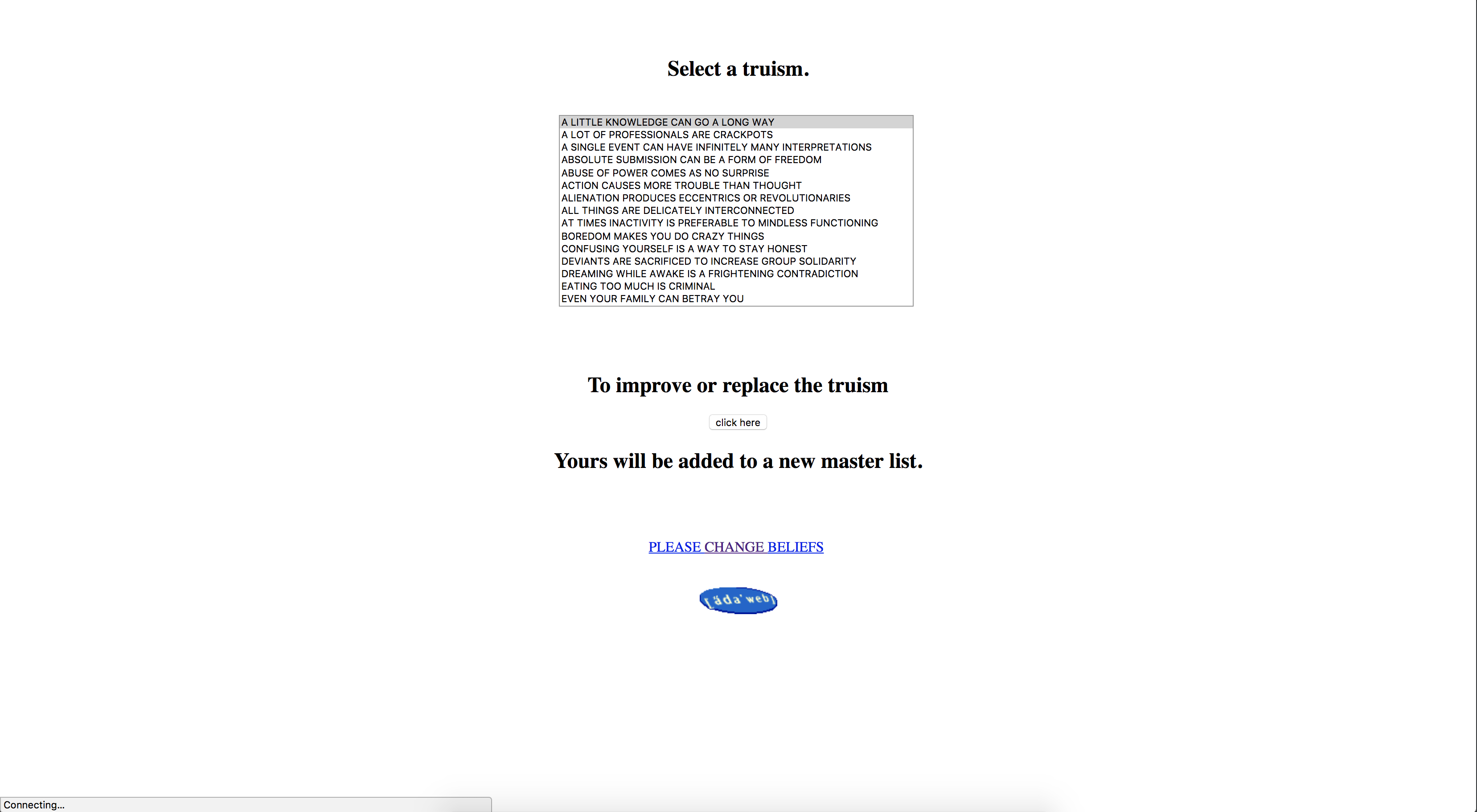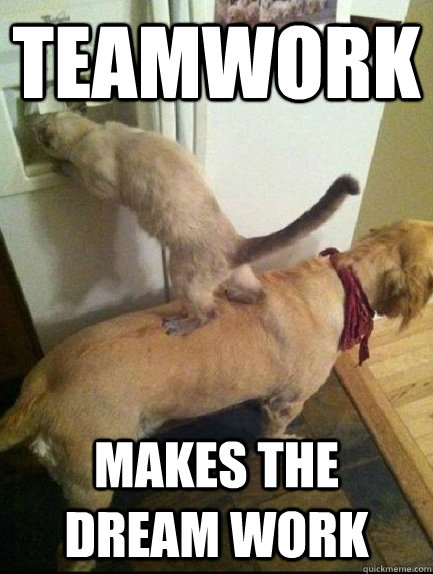Throughout the semester our Experimental Interaction class has dabbled in a concept known as the Third Space through media like Adobe Connect, Facebook, and videos. We have also been introduced to different artists and artworks that have further expanded our knowledge of the affect and use of the Third Space in Blast Theory, Furtherfield, connecting a boundaries, and creating a new world. And for three days straight, we will be doing an online symposium organized by Randall packer, ADM, and other guest artists. Each day invites different people to present a keynote and further explain the works in the case of Maria Chatzichristodoulou and Matt Adams; or people to perform an online performance in the case of Annie Abraham and the School of Art Institute of Chicago.
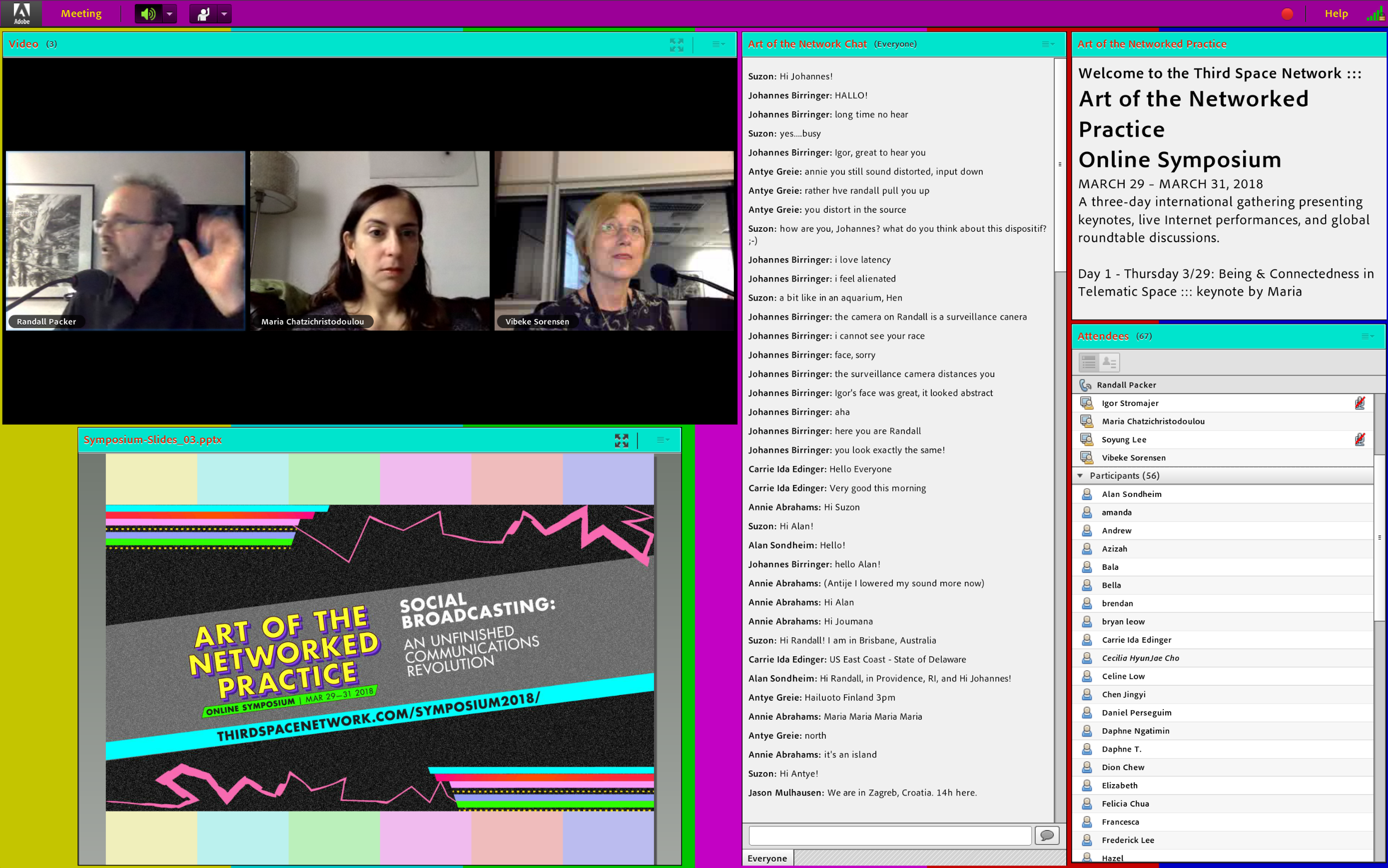
Throughout the online symposium we discussed many artists and related it back to the overarching themes of interactivity with the audience and the artists, connecting the world separated by physical barriers, and embracing the idea of a new alternative world. Companies like Blast Theory have been working on ways to make an interactive media that creates novel forms of art that engages the audience throughout the internet. Blast Theory focuses on putting you in the center of the work by making you the main character, the “player one”. People like Annie Abraham have been breaking through the entanglement created in order to bridge the gap between human relations and the geographical boundaries. The idea introduced to us by Gene Youngblood is the big umbrella idea that encompasses everything mentioned above. His idea is that that we should create an entirely new social world. preferably built upon Television. This social world will be “liberated” from the conventional practices of the media and instead embrace community activism, radical theory, and artistic experimentation. There is so much opportunity for humans to “liberate” ourselves from the customary to embrace the unexplored that surround us. We see in this symposium the people who have seized these opportunities and created something beautiful from it.
Day One of the symposium started off with a small introduction by Randall Packer explaining the purpose of the symposium and a short description of the guests. Shortly after the introduction, we moved on to our guest key-note speaker Maria Chatzichristodoulou (Maria X).
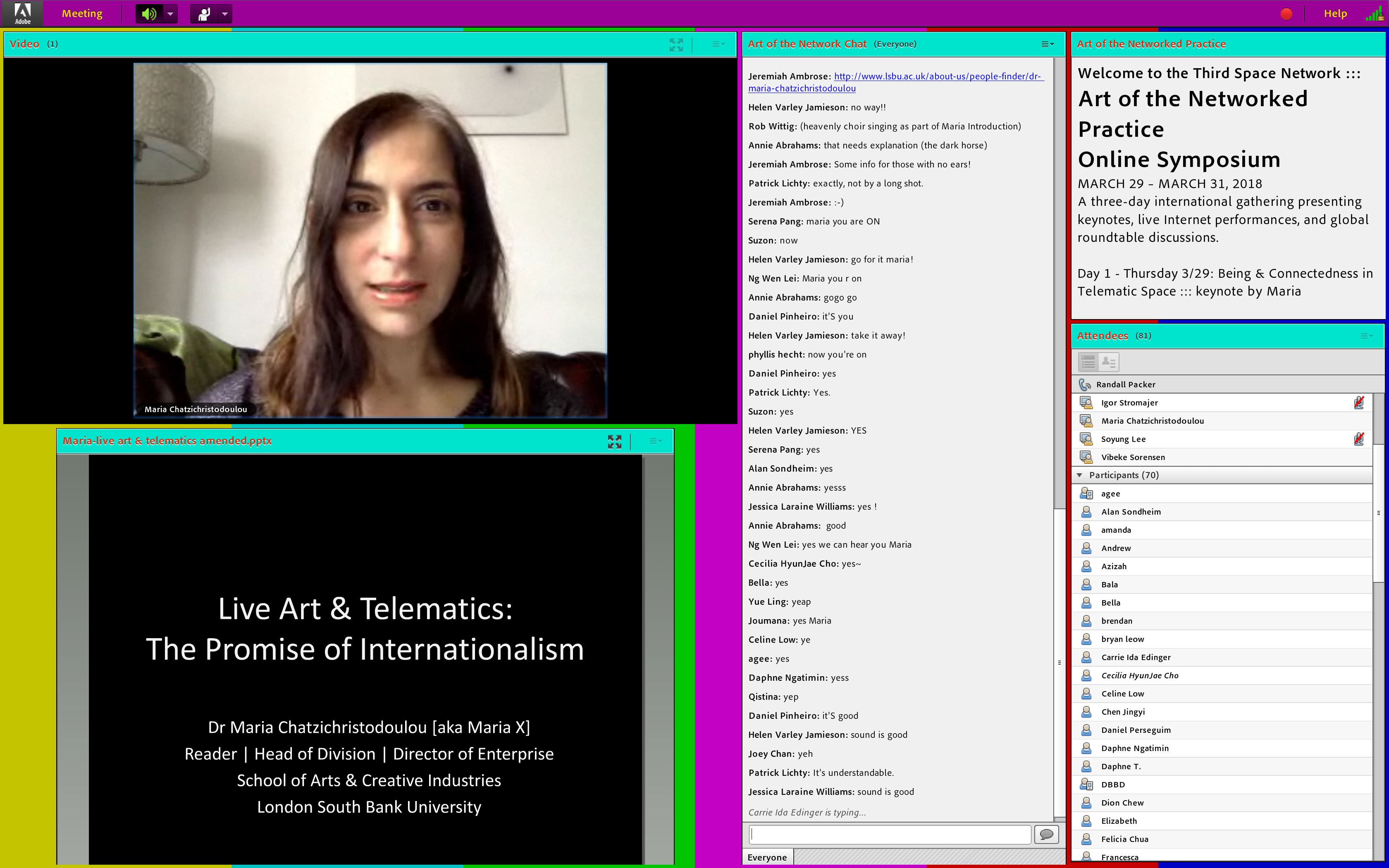
She introduced to us some artworks, artists, quotes that she believed best exemplified telematic art. symposium. She even dabbled in responding to difficult questions on whether Telematic Art has fully fulfilled its aspirations to connect artists and audiences across geographical the geographical landscapes. Later we were re-introduced to Annie Abrahams, a telematic artist who we had the pleasure of meeting and creating with. The performance itself consists of the members appearing one at a time, at first covering their cameras and each saying certain numbers with additional noise. The interesting thing to note is that though we could not see their faces, whenever they spoke, the border of their box would light up blue.
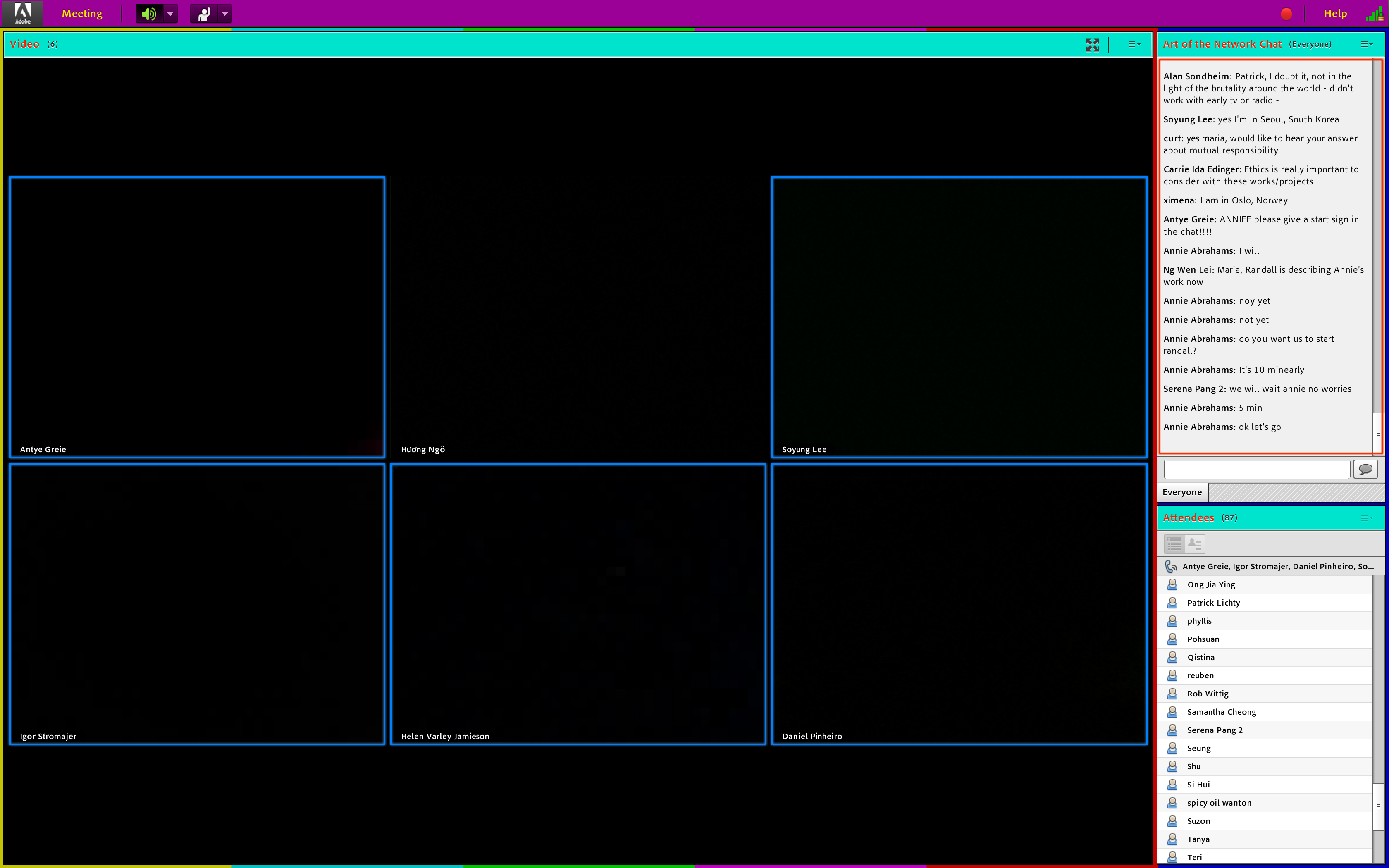
The Christmas lights synchronized with the beats of a Chirstmas carol, the boxes lit up with a rhythmic flow that harmonized with the voices of the performers. Soon we saw them removing the black screens and replacing them with objects, and started to voice overs of political sayings in a very dramatic tone.
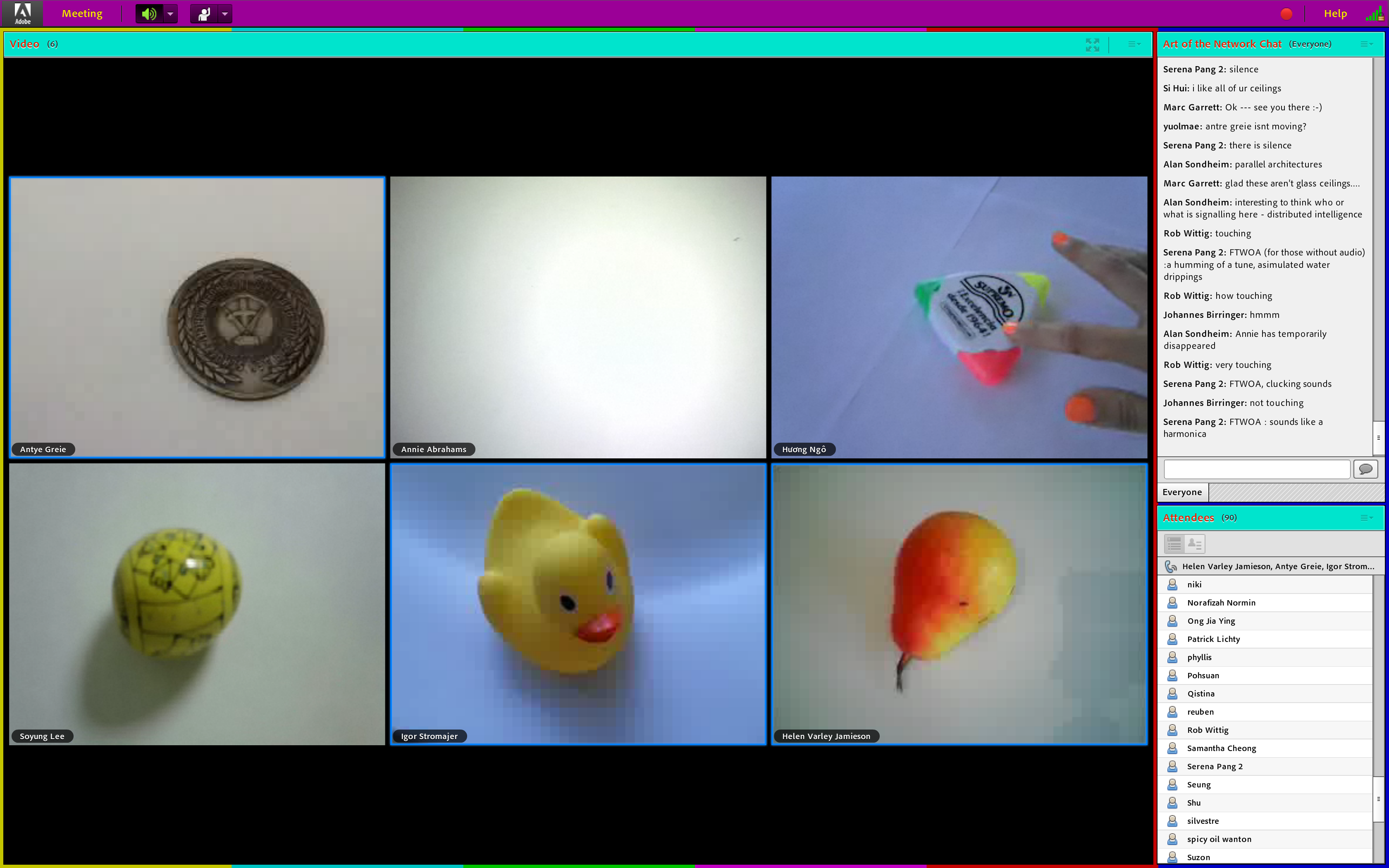
We got to see in real time the genius of Annie Abrahams’ ability to organize and manage such an event where things could go according to plan and might go awry. Maria Chatzichristodoulou even stated herself that Abrahams’ work has the ability to concern itself in “both communication and miscommunication, absence and presence.” Annie Abrahams performance connected us with people from all around the world with different backgrounds- thus breaking down the geographical obstructions that divide the world. And in breaking down these geographical obstructions, Annie and her teammates have created an alternative world where it encompasses around a global village. about some of the artworks and then mention my opinions and feelings. This world is connected by its limitations, in the sense that bandwith and connection are the factors that allow people from all over the world to gather yet are the factors that also cause discrepancy during the gatherings.
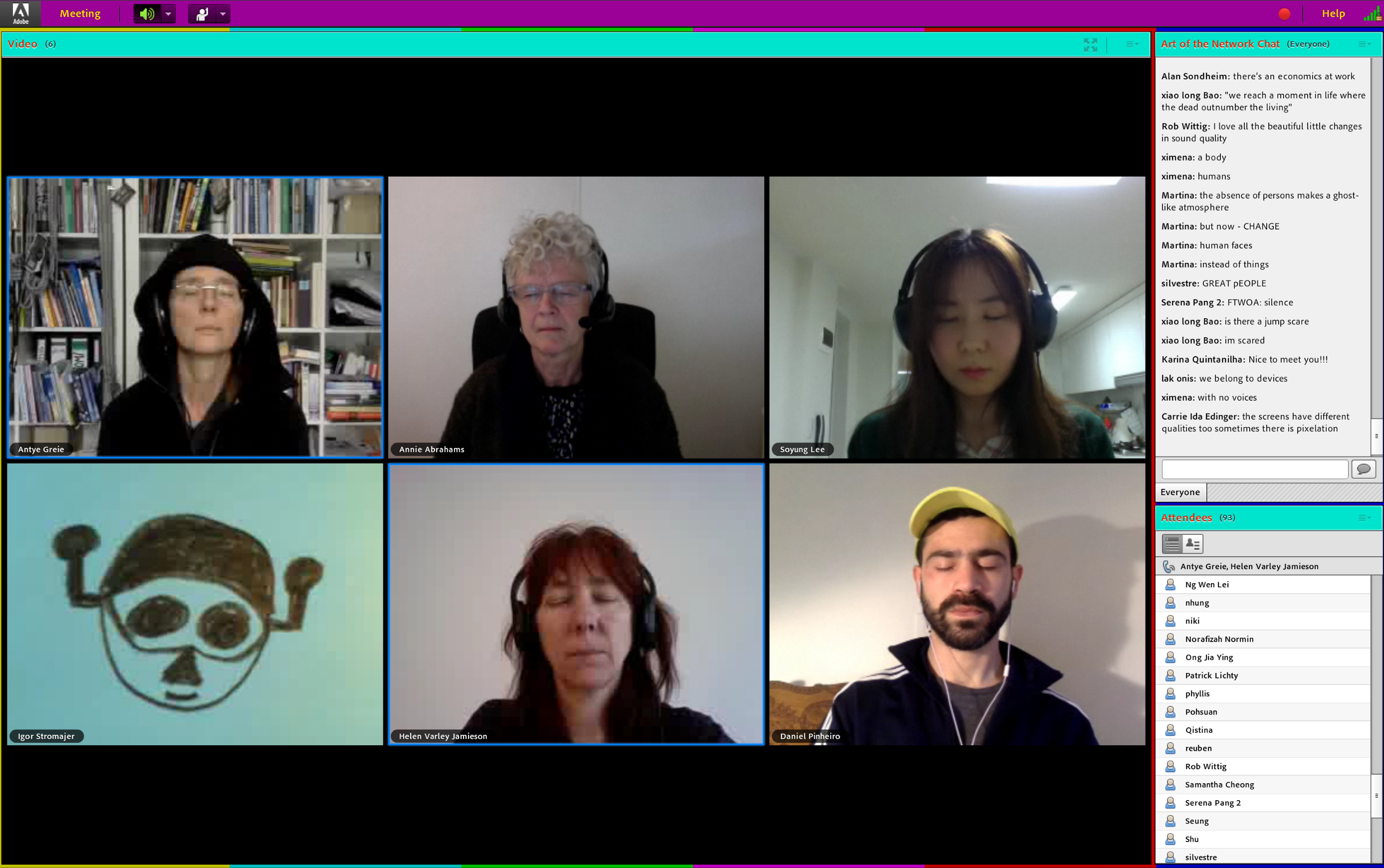
Day Two began with another introduction by Randall Packer, for the guests who were not present on the first day. After this introduction, we were automatically ushered into the keynote speaker Matt Adams as he began to talk about the works created by Blast Theory as well as the history and technicalities that come with each of the unique works. Blast Theory is an adventurous group of artist who use interactive media to create unique forms of performance as well as interactive art that engages the audience individually or as a whole. Their performances are generally site-specific, live, digital broadcasts and come in the form of videos and games. Blast Theory has several notable works such as Kidnap, Uncle Roy All Around You, and Can You See Me Now?, and I’d Hide You. Kidnap and Can You See Me Now? are two fo the more video works that Blast Theory has made while I’d Hide You and Uncle Roy All Around You are two interactive games.
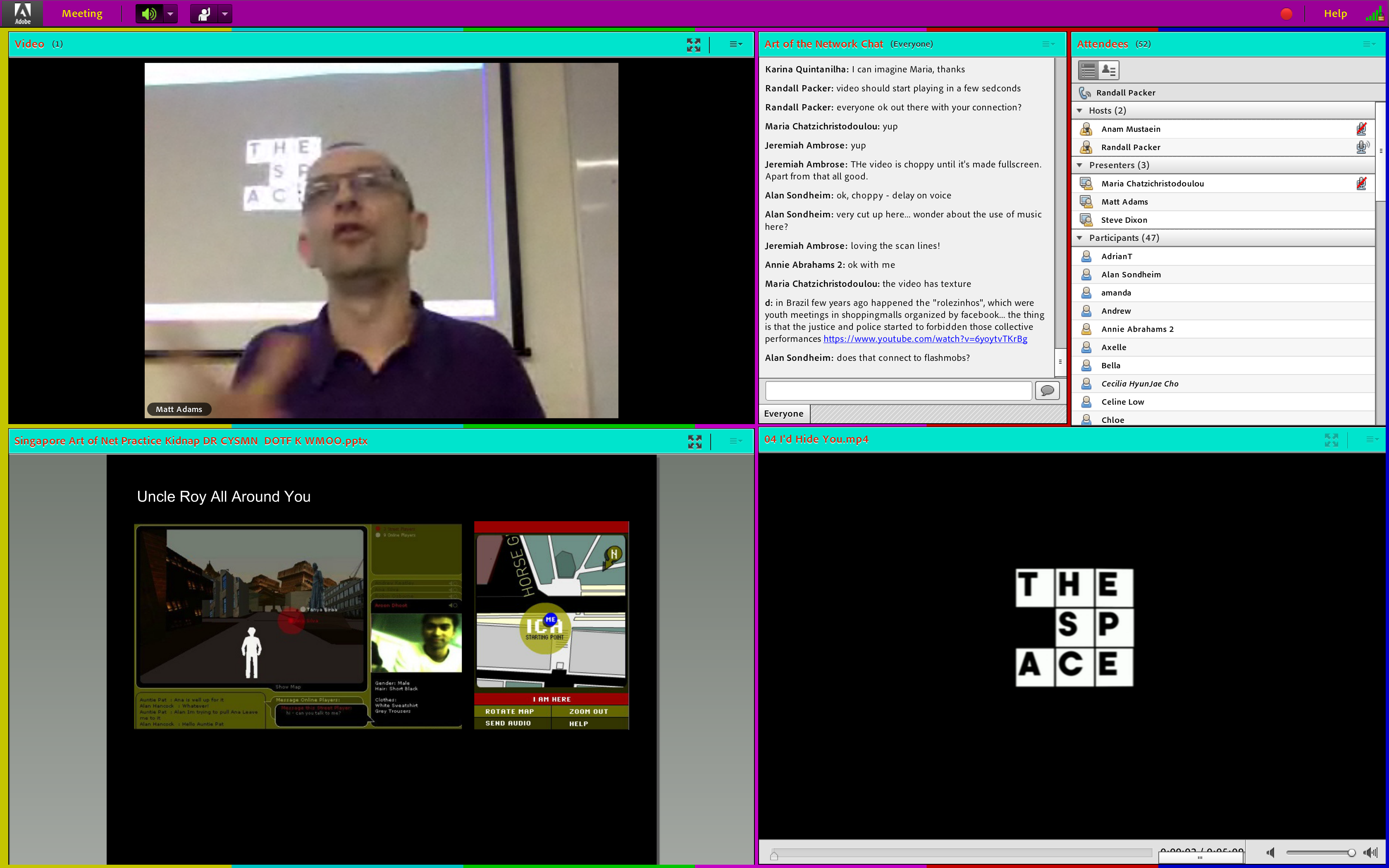
However, all works somehow find a way to engage the audience not only physically but also emotionally. This interaction happens in the third space (maybe not in the case of Kidnaped). However, analyzing Kidnap in more depth, I have noticed that though the interaction does not happen in the “third space” (the space created through the combination of the phsyical and media) but it’s own form of space. Kidnap finds a way to connect with the people on another level that is not just the physical space around them but in this bond that arises between the Kidnapper and kidnapee. I especially like the work I’d Hide You organized by Blast Theory that brought together four runners and through these runners we get to experience “the world through the runners eyes as they stream video: ducking and diving, chatting to passersby, taking you down the back alleys to their secret hiding places.” I would love to be a part of this game and found that the general feel of the piece reminded me of the action and adventure movie Nerve, where people are either watchers or players. The watchers must give the players crazy dares and the more dares the players do the more money they receive. Along this idea, I’d Hide You interacts with the audience as they are the ones who take the picture, hinder other players, and help their team. They are the brains while the runners are the body that we control to experience the world around us.
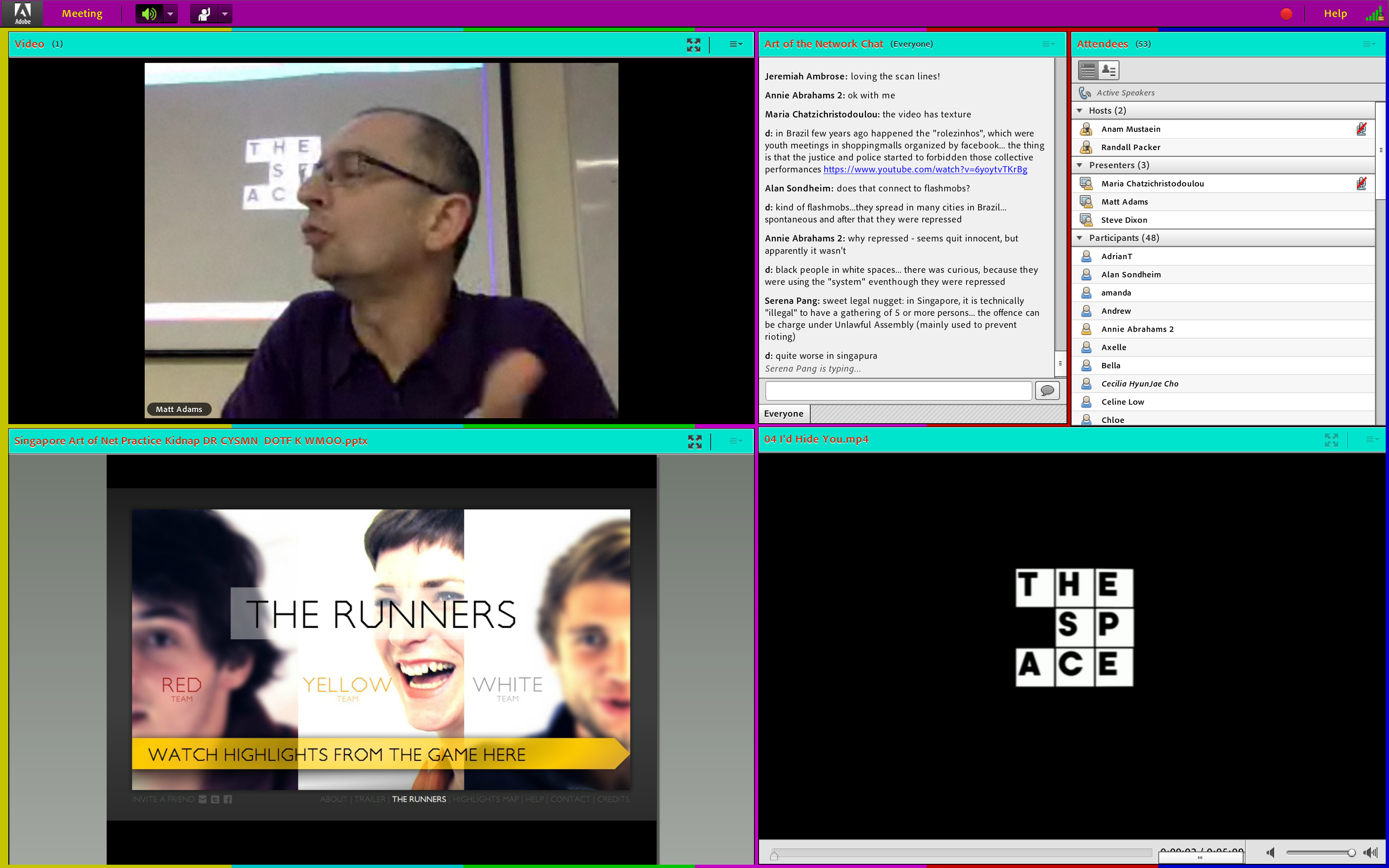
My afterthoughts of the experience was wonder. I wondered how it was possible something like this came to be and how smoothly this flowed for something held online. Even physical meetings in the same room have the possibility of falling apart yet this Online Ensemble managed to flow with out any major hindrances. I would like to participate in something like this in the future and maybe even play a more active role as well as it seems like a new and engaging way to interact with people in a completely new world. This world has shown me so much and I am eager to step into it once more.
The online symposium was made possible by the hard work of every single person involved from the online moderators to the performance artists to the those behind the scenes. These people each brought something to the table whether it be to introduce us an idea or share a piece of their passion with us.

